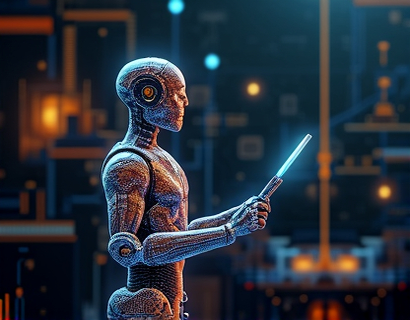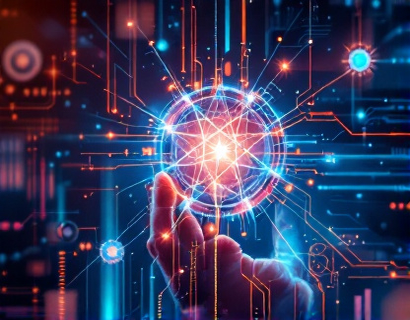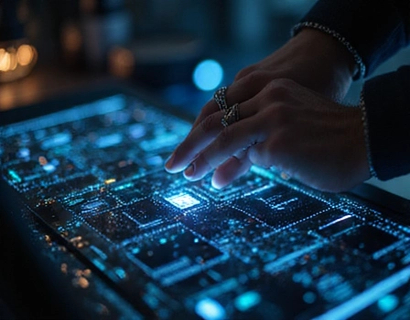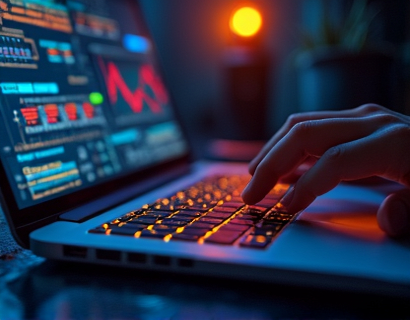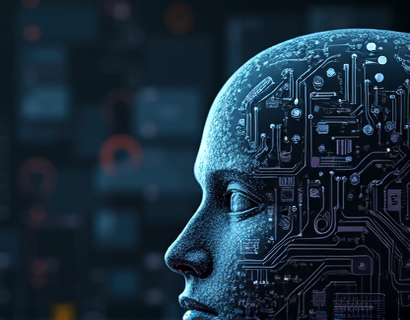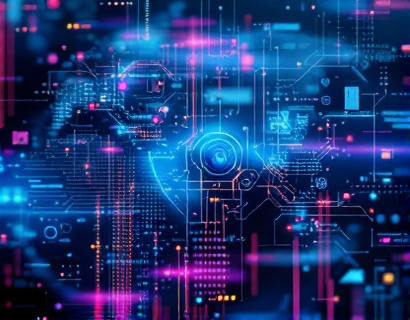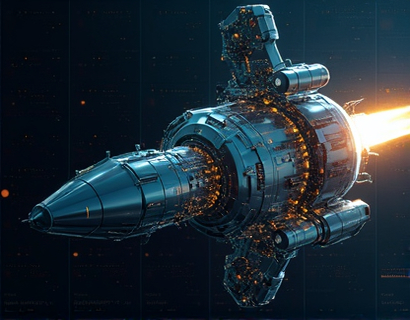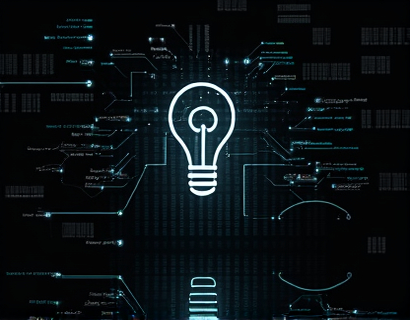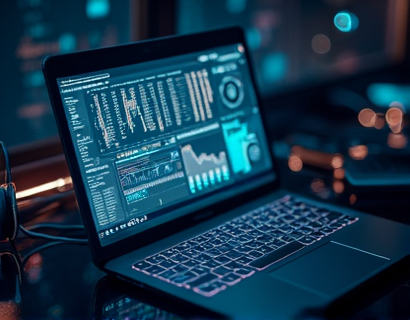AI and Crypto Synergy: Revolutionizing Digital Ecosystems for Tech-Savvy Innovators
The intersection of artificial intelligence (AI) and cryptocurrency is giving rise to a new era of digital ecosystems, one that promises to transform the way we interact with crypto applications and services. This synergy is not just about combining two advanced technologies; it's about creating a seamless, intelligent, and secure environment that empowers users and innovators alike. For tech-savvy individuals and innovators, this fusion opens up a world of possibilities, offering cutting-edge tools and strategies to elevate their digital journeys.
The traditional crypto landscape has been marked by its decentralized nature, security features, and potential for financial freedom. However, the user experience has often been marred by complexity, security concerns, and a steep learning curve. AI enters the scene to address these challenges, bringing with it the promise of enhanced security, user-friendly interfaces, and intelligent automation. This article delves into how AI and crypto are merging to revolutionize digital ecosystems, providing a comprehensive look at the technologies, strategies, and future possibilities.
Enhancing Security with AI
One of the most significant advantages of integrating AI into crypto ecosystems is the enhancement of security measures. Cryptocurrencies, by their nature, are vulnerable to various types of attacks, including hacking, phishing, and smart contract vulnerabilities. AI can significantly mitigate these risks through advanced threat detection and response systems.
Machine learning algorithms can analyze vast amounts of data to identify patterns and anomalies that indicate potential security breaches. These systems can detect unusual transaction patterns, suspicious login activities, and even predict potential attacks before they occur. For instance, AI-powered monitoring tools can continuously scan blockchain networks for signs of malicious activity, automatically triggering alerts and countermeasures to protect user assets.
Moreover, AI can improve the security of private keys and wallet management. Traditional methods of storing private keys, such as hardware wallets, can be compromised. AI-driven solutions can generate and manage complex, dynamically changing private keys, reducing the risk of theft or loss. Biometric authentication, powered by AI, can further secure access to crypto assets, ensuring that only authorized users can interact with their funds.
Streamlining User Experiences with AI
The complexity of crypto applications can be daunting for new users, often leading to a high drop-off rate. AI can simplify these experiences by providing intuitive interfaces and personalized interactions. Chatbots and virtual assistants, powered by natural language processing (NLP), can guide users through the crypto landscape, answering questions, providing tutorials, and offering real-time support.
Personalization is another area where AI shines. By analyzing user behavior and preferences, AI can tailor the user interface and experience to individual needs. For example, a crypto trading platform can use AI to recommend assets based on a user's trading history, risk tolerance, and market trends. This not only enhances user satisfaction but also increases engagement and retention.
Optimizing Trading and Investment Strategies
AI is revolutionizing the way users trade and invest in cryptocurrencies. Traditional trading relies heavily on human analysis and decision-making, which can be limited by cognitive biases and the inability to process vast amounts of data in real-time. AI algorithms, on the other hand, can analyze multiple data sources, including historical price data, market news, and social media sentiment, to make informed trading decisions.
Automated trading bots, powered by AI, can execute trades based on predefined strategies, 24/7, without emotional bias. These bots can adapt to changing market conditions, optimizing trades for maximum profitability. Additionally, AI can provide predictive analytics, helping users identify potential market trends and make proactive investment decisions.
Portfolio management is another area where AI excels. By continuously monitoring asset performance and market conditions, AI can suggest rebalancing strategies to optimize returns and minimize risk. This level of automation and insight is invaluable for both novice and experienced investors, democratizing access to professional-level trading tools.
Enhancing DeFi Applications
Decentralized Finance (DeFi) has emerged as a transformative force in the crypto ecosystem, offering decentralized alternatives to traditional financial services. AI can further enhance DeFi applications by improving their functionality, security, and user experience.
Smart contracts, the backbone of DeFi, can be made more robust and efficient through AI. AI can analyze smart contract code to identify potential vulnerabilities and suggest optimizations, reducing the risk of bugs and exploits. Additionally, AI can automate the execution of complex financial operations, such as lending, borrowing, and yield farming, making DeFi more accessible and user-friendly.
AI-driven risk management tools can also play a crucial role in DeFi. By continuously monitoring market conditions and user activities, these tools can detect and mitigate risks in real-time, ensuring the stability and reliability of DeFi platforms. This is particularly important in a space where liquidity and trust are paramount.
Fostering Innovation through AI-Driven Development
The development of new crypto applications and services is accelerated by AI. Developers can leverage AI tools to streamline the coding process, automate testing, and optimize performance. AI-powered development environments can suggest code snippets, identify potential errors, and even generate entire components of an application, significantly reducing development time and costs.
Moreover, AI can facilitate the creation of novel crypto use cases. By analyzing existing applications and user needs, AI can propose innovative solutions that combine the strengths of both technologies. For example, AI-driven predictive maintenance for IoT devices on the blockchain can create new revenue streams and enhance the utility of smart contracts.
Building Trust through Transparency and Explainability
Trust is a critical factor in the adoption of crypto technologies. AI can help build trust by providing transparency and explainability in AI-driven decisions. Techniques such as explainable AI (XAI) can break down complex AI models into understandable components, allowing users to see how decisions are made. This transparency is essential for users who are often wary of the "black box" nature of AI systems.
Furthermore, AI can enhance the auditability of crypto applications. By maintaining detailed logs of AI-driven processes and decisions, these systems can be more easily audited for compliance and security. This level of transparency not only builds trust but also ensures that applications meet regulatory standards.
Challenges and Considerations
While the synergy between AI and crypto offers immense potential, it also comes with challenges that must be addressed. One of the primary concerns is the computational power required to run AI algorithms, especially in a resource-constrained environment like the blockchain. Efficient AI models and edge computing solutions are necessary to ensure that AI-driven applications are scalable and cost-effective.
Another consideration is the regulatory landscape. As AI and crypto continue to evolve, regulators are beginning to take notice. Ensuring compliance with existing laws and anticipating future regulations is crucial for the sustainable growth of AI-enhanced crypto ecosystems. Developers and innovators must stay informed and adaptable to navigate this complex regulatory environment.
The Future of AI and Crypto Synergy
The future of AI and crypto synergy is bright, with numerous possibilities on the horizon. As AI technologies continue to advance, we can expect even more sophisticated applications in the crypto space. Quantum computing, for instance, could further enhance AI's capabilities, enabling more complex and efficient algorithms.
Interoperability between different blockchain platforms and AI systems will also become more seamless, fostering a more integrated and cohesive digital ecosystem. This will allow for the creation of hybrid solutions that leverage the strengths of both technologies, offering users unparalleled functionality and security.
In conclusion, the fusion of AI and crypto is not just a technological trend but a fundamental shift in how we approach digital ecosystems. For tech-savvy innovators, this synergy provides a wealth of opportunities to create innovative, secure, and user-friendly crypto applications and services. Embracing this revolution will be key to staying ahead in the rapidly evolving digital landscape.





